For many, falling in love with coffee is a process.
Some of us started coffee out with something like a Java Chip Frappuccino from Starbucks. A far cry from a deep, dark cup of brewed black coffee.
Frappuccinos have their place, no doubt, but the great, wide world of coffee is intriguing and pulls many of us in deeper. However humble our coffee-beginning starts out as, it is bound to flourish into a deeper appreciation with some applied experimentation.
One of those big steps in the process is home brewing.
Two of the most popular brewing methods are Pour-over and French Press. These are both big steps up in quality as compared to a percolator. Both allow you more control over the brewing variables.
Don’t know which one is best for you? Read on.
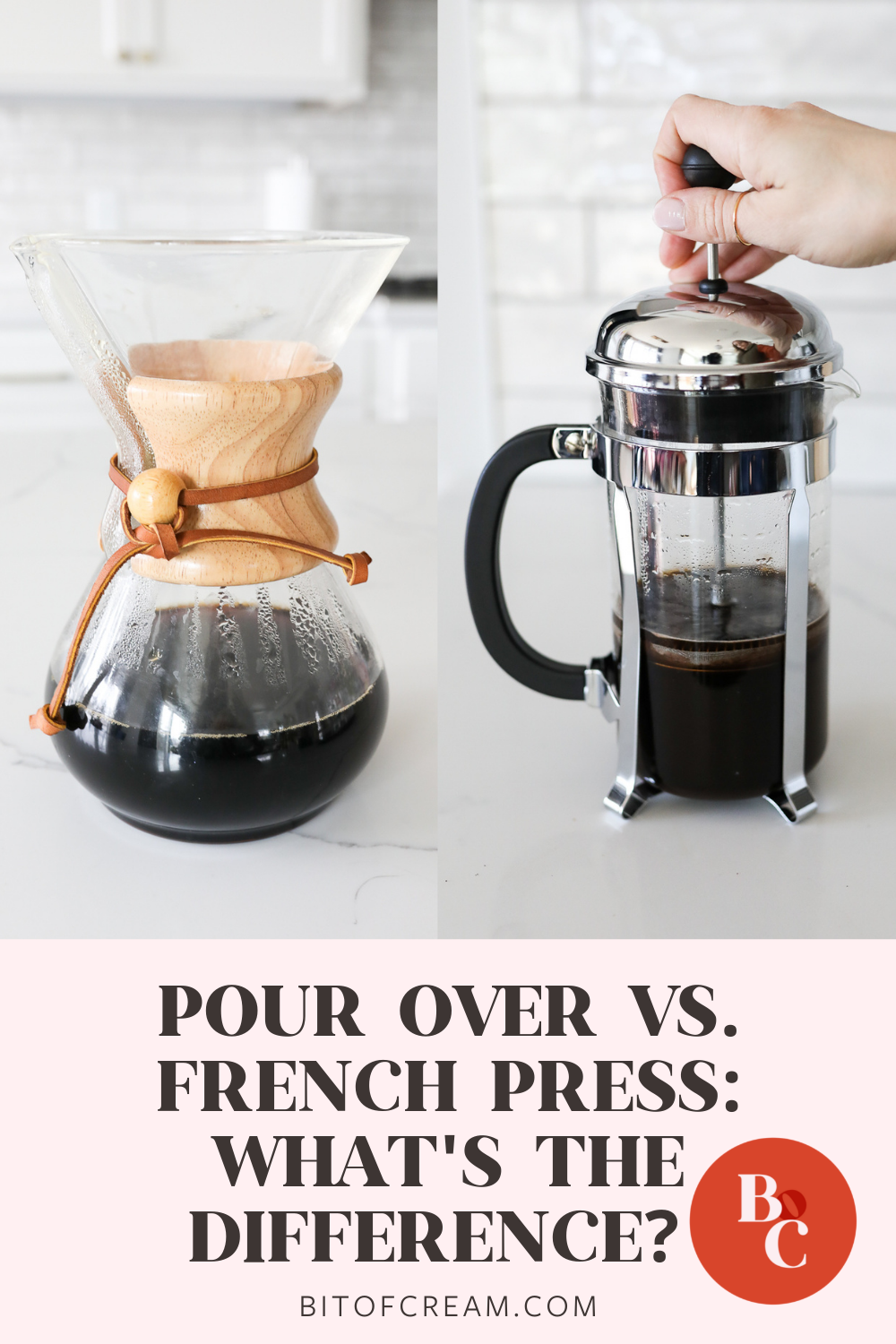
This post includes affiliate links.
What is Pour-Over Coffee?
Pour-over coffee is a brewing method where you pour hot water over a bed of freshly ground coffee, in a cone-shaped filter. The water brews with the coffee grounds and passes through the bottom of a filter into your mug.

Pour-over coffee is made differently from drip coffee makers through greater control of the entire process. Drip coffee has water pass through the grounds at an uncontrolled rate.
With a pour-over, you are boiling your water, grinding your coffee, measuring out an exact amount, and experimenting with the brew time. You are completely in control of everything.
Pour-over coffee is one of the most popular methods for brewing high-quality, flavorful coffees at home. Its popularity stems from its simplicity. Here’s the process:
Pour Over Brewing Process
To make pour-over coffee, you need a pour-over cone, filter, and coarsely ground coffee like you’d do for espresso. The filter should be the same size as the cone.
Step One: Get Set Up
Bring your water to a boil. I use an electric water gooseneck kettle. That way I can heat my water in the same container I’m pouring into the cone with.
While the water is boiling you’ll want to insert the paper filter into the pour-over cone. Rinse the filter once it is in the cone to remove some of the ‘paper’ residue and taste from your brew.

It also pre-heats your pour-over cone to help maintain a consistent brewing temperature if you rinse with spare hot water.
Step Two: Prepare Your Coffee
If you are using pre-ground coffee, you should be good to go at this point. But if you are grinding your own coffee you will need to do that now.
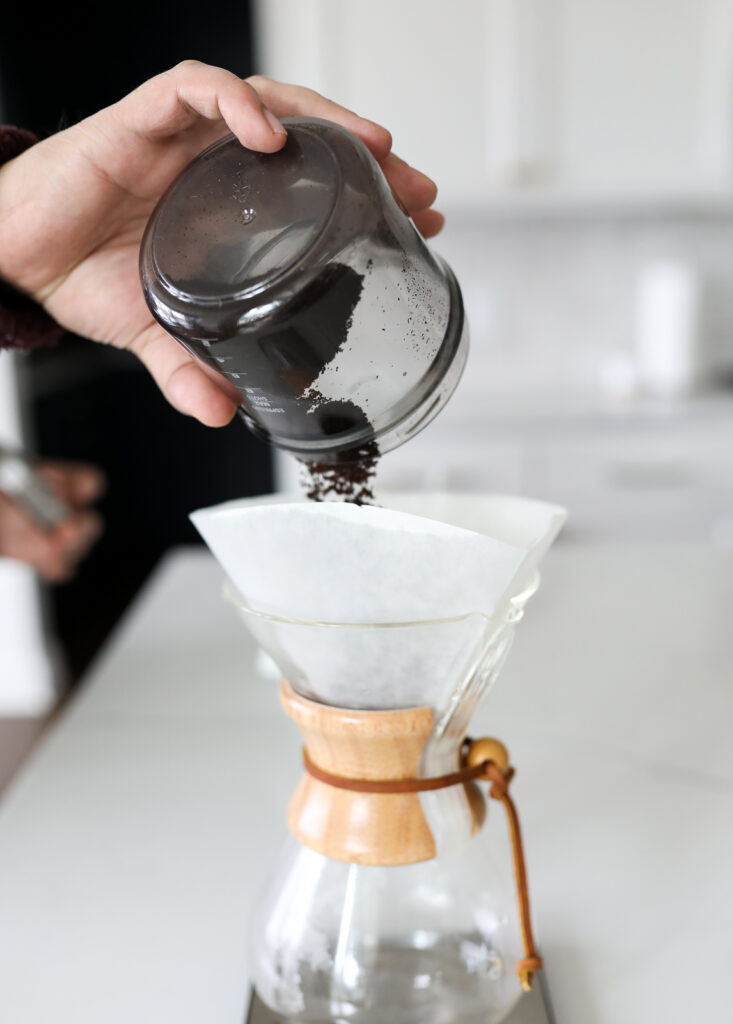
Want to know exactly how much coffee to use? Check out this article on coffee scope sizes and brewing proportions.
You’ll want a medium-coarse grind size for your coffee, much like the consistency of sand. Place the ground coffee into the bottom of the paper filter in the cone.
Step Three: Time to Bloom
This step is the most interesting for new pour-over fans. You’re going to bloom your coffee grounds before pouring all our water in. Blooming is the process of covering all the grounds of coffee with as little water as possible.
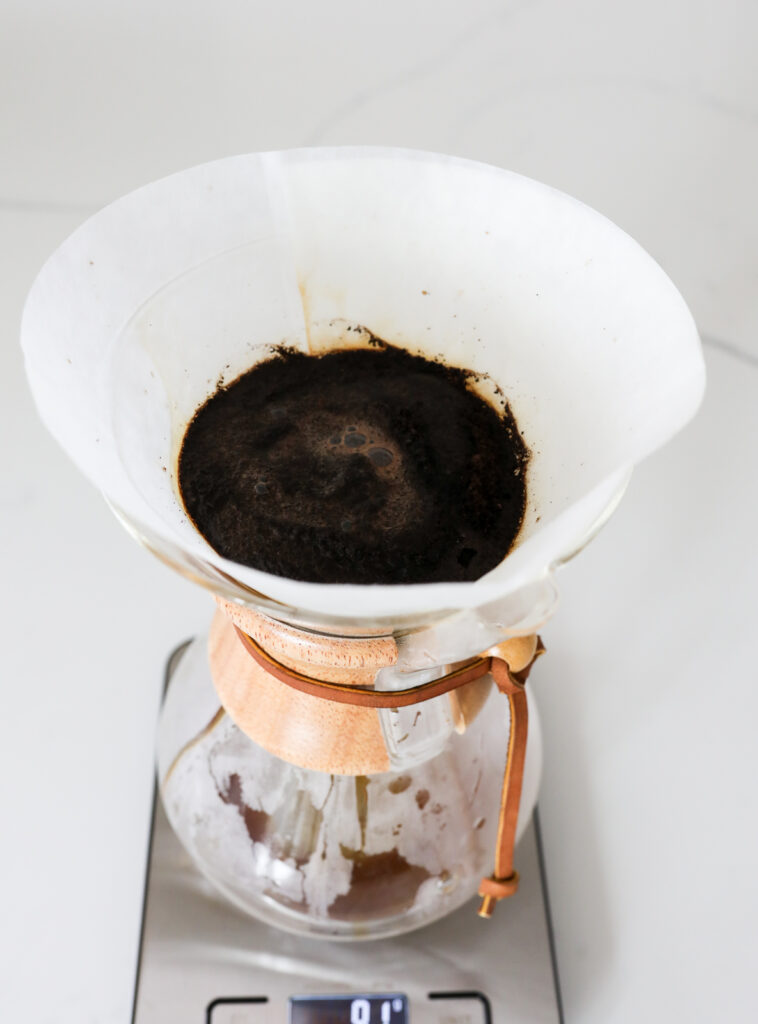
Blooming for 30 seconds optimizes the extraction of the coffee grounds by releasing some CO2 and loosening the oils for the rest of the brewing process. You’ll want to start at the center of the coffee and make your way out to the edges using a circular motion .
When you have very fresh coffee (freshly roasted and ground) this blooming step will result in your coffee rising slightly and then shrinking back down. But we’ll let you find that out as you test it out.
Step Four: Finish Brewing Your Pour Over
Begin pouring your water slowly into the cone. Don’t fill the cone all the way up, you’ll only want to fill it halfway. After you notice a smooth foam forming on top you can slowly start adding the last of your water.
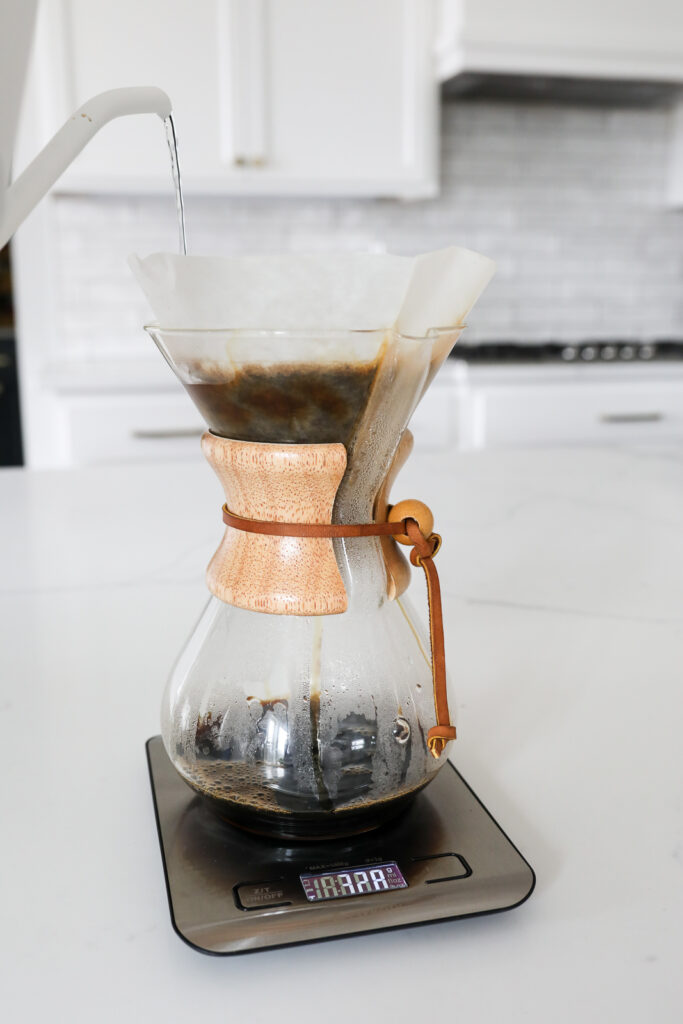
Pour straight down the middle and you can slowly fill the cone past the halfway mark. You’ll want to make sure not to pour more water than your cup has room for.
The Pros and Cons of Pour Over
The pros rest in a pour-over’s simplicity. You are involved in the brewing process at every step but each step is simple. You can also adjust every variable.
Add more or less coffee. Change the coarseness of the grounds. Change how long you bloom or how quickly you add water.

The cons are that you need to buy paper filters constantly. Each cup is a filter which is an inefficient use of paper. There are some eco-friendly options worth checking out though.
Another con is that pour-overs can take 4-6 minutes but you are involved through the whole process plus prep time.
Pour Over Tips
Use a journal to make notes of all your attempts. You are going to eventually figure out how you like to use your pour-over. Having notes helps you test all your variables and know how they affect your coffee.
What is French Press Coffee?
French Press coffee is a simple and easy brew method to make coffee at home. Be warned, some people love French Press coffee and others hate it! That’s okay since you are trying to find out what you like.
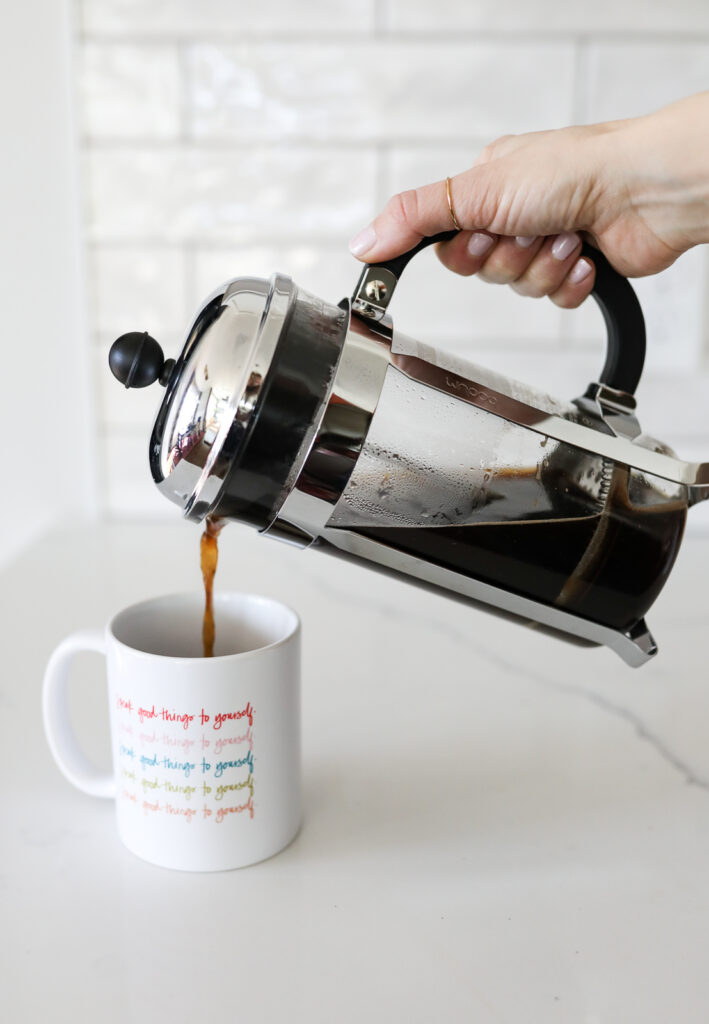
French Press involves brewing the coffee continuously and directly in your hot water. You’re going to notice flavors you never have with this method!
Brewing with a French Press is dramatically different from other methods. Pour-over is most like a standard drip brew (with you in more control) but French Press is completely different.
In fact, it is most like brewing Cold Brew coffee, but the brewing temperature is hot and for a shorter period of time (much shorter).
A French Press coffee uses a French Press Device. Essentially you put coffee grounds and hot water in the bottom of the press pot, let it sit and then press the top of the device which is a stainless steel filter down to separate the grounds from the water to give you your perfect cup of coffee.

The full immersion of coffee grounds in the water and the lack of a paper filter leave plenty of room for the coffee you’re brewing to speak for itself. You’re going to notice really great differences between coffee with French Press. Here’s how you use the French Press method:
French Press Brewing Process
Step One: Get Set Up
Bring your water to a boil. Measure out exactly the amount of water you need after your water is boiled.
Prepare Your Coffee

Most pre-ground coffee is ground too fine for French Press. It’s best to use a burr grinder and grind your coffee as coarse as the grinder will allow.
Again, check out this article on coffee scope sizes and brewing proportions. Place the ground coffee into the bottom of the French Press.
Start the Brew
At this point, we’re going to add our measured, freshly boiled water to the press. We’re not saving any for later so pour it all in.
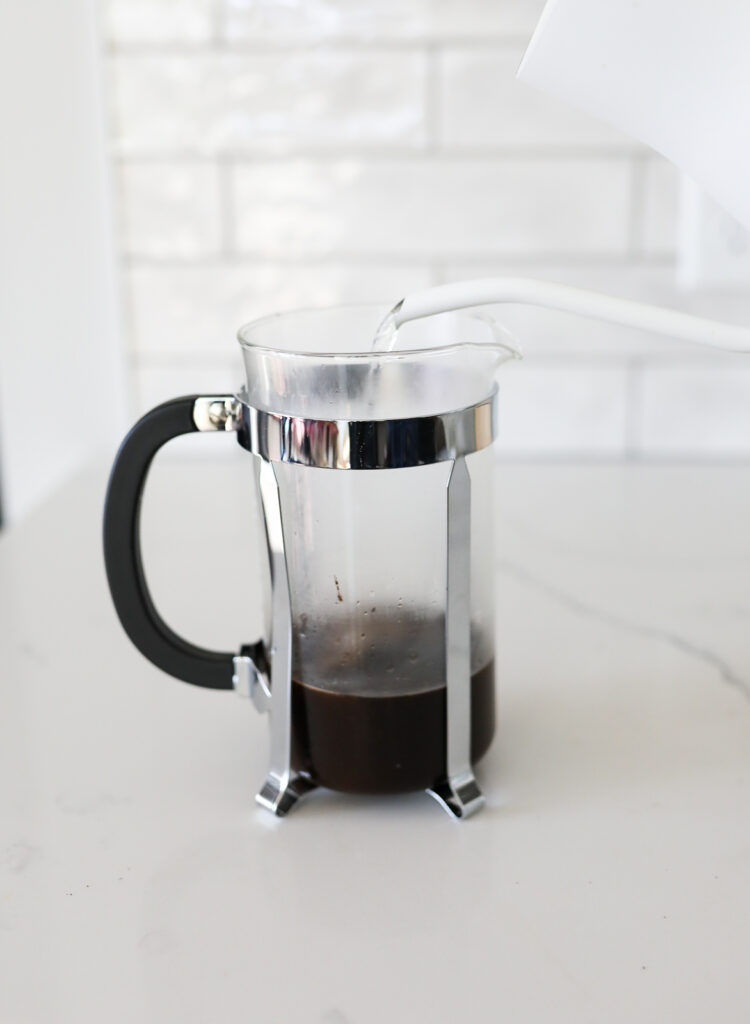
I like to stir the grounds around in the water to make sure there are no clumps of ground coffee that won’t get extracted properly.
Start your timer for 4 minutes (a phone or stopwatch works fine). If you like less intense flavor, you can brew it for less time. If you like stronger coffee, brew it for longer!
Place the lid of the press on but do not press the metal filter down yet.
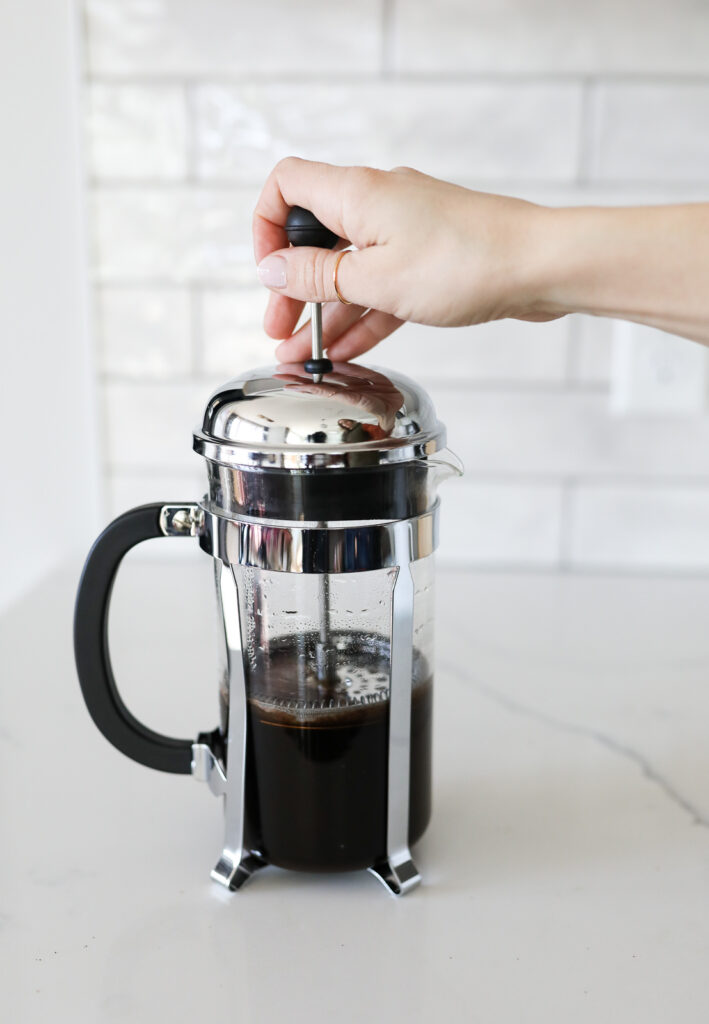
Press and Enjoy
At the four-minute mark, you will go ahead and press the plunger down. I suggest brewing for 4 minutes to start but of course, that is one of the variables you’ll play around with.

Pressing down the plunger filters all the coffee grinds to the bottom of the press while the brewed coffee is allowed to pass through to the top. You can then pour the coffee into your mug and enjoy.
The Pros and Cons of French Press
The biggest con is that it isn’t for all coffee drinkers. It makes a very bold cup of coffee. You’ll notice a film of oil sitting at the top of your cup. This doesn’t happen with any brewing method involving paper filters. But, this boldness is also why so many do like it.
Pros would be that once the brewing time starts you can leave it alone. Make your fried egg, feed the dog, or do whatever you need to do for 4 minutes in your morning. Only don’t let the timer go off without you noticing!

Also, the ease of use is something that all coffee lovers can agree on! While you can tweak things like the amount of coffee grounds you put in or how long it brews, once you have your method the finished brew won’t vary that much!
French Press Tips
The biggest factor in how French Presses taste is the brewing proportions and the type of coffee used. Keep that coffee journal handy and take notes about your variables and what you did and did not like.
For many people, they’ll need to test a lot before they find out the secret sauce for French Press.
Want to know what size French Press to get? Head here!
French Press Vs Pour Our Coffee – Which is Right for Me?
Obviously, you’re going to have to try both brewing techniques to know for sure. A good way to test this out without buying the gear for both is to go to your local shop and order a pour-over and a french press at the same time.
Make sure the same coffee is used for both and see what you like best. On your next visit, do the same thing but ask for a different type of coffee. Try a light, medium, and dark roast.
You’ll spend $20 but you’ll have a really good idea of what you like before you invest in gear.
Best Pour Overs
When looking at pour-overs, also consider the size of filters you need. Some specialty pour-over sets even have their own type of filter you’ll need to get for them.
Pour-over prices can range from $15 to $80. Some will be single-serve sizes and others will serve multiple cups. Know what you need and look for one in your price range.
1. Chemex

The Chemex coffee pour-over is the one I showed in this post! It’s a manual, drip-brewing method of making coffee.
Chemex has some differences from a standard pour-over but mostly because it is a particular company’s approach to it.
The process involves pouring water over the ground coffee beans and brewing into the signature Chemex glass container.
2. Hario Mugtop Pour Over
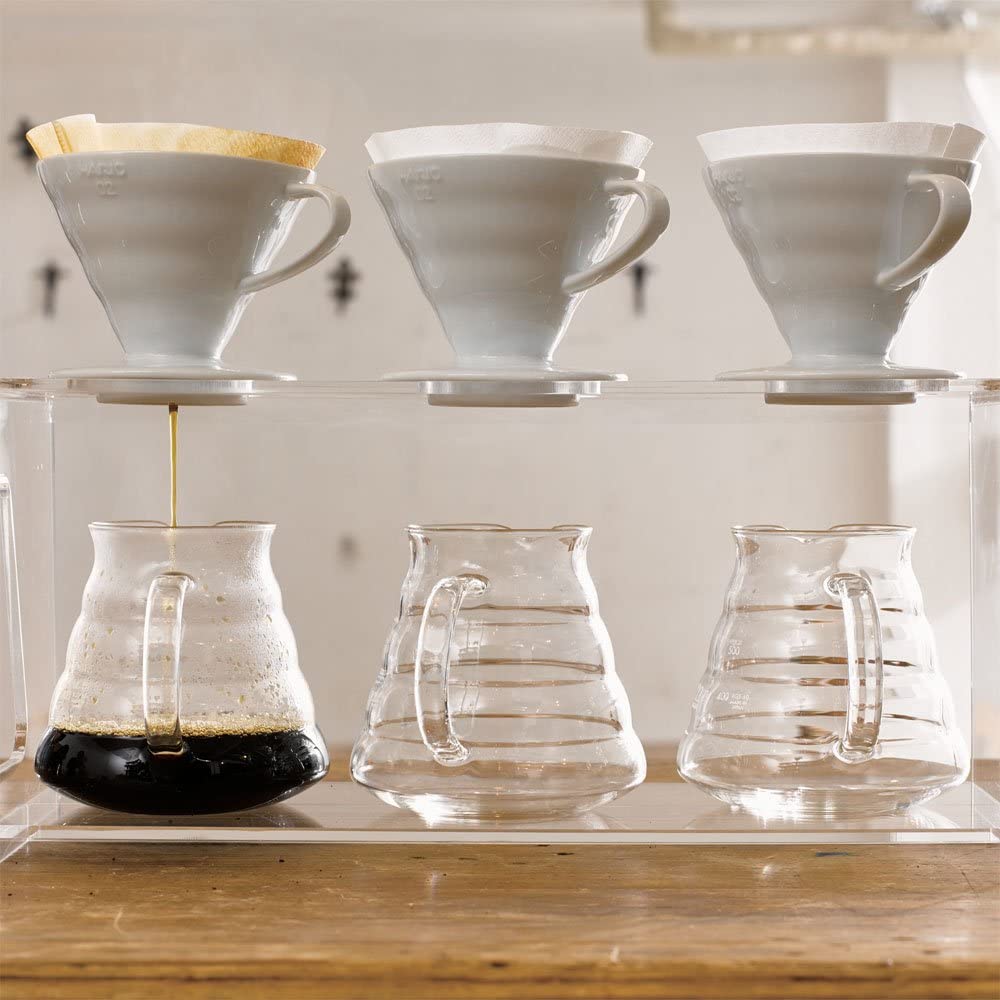
The Hario pour-over sits atop of your mug for the easiest single-cup brew you can ask for. Lovely ceramic material while still performing the necessary function.
At less than $25, this is a great find and a good brand.
3. Hario Pour Over w/ Stand

This is a beautiful kit for pour-over enthusiasts who are committed to this brewing method. Perfect for brewing multiple cups at a time and showing off to guests.
This will impress and create a smooth coffee. Just add a bit of cream!
Best French Presses
French Presses range in sizes. There are single-serve sized French Presses that are great for travel or brewing for one. A large French Press coffee maker can serve up to 8 cups of coffee.
You’ll want a quality press since the plunger does experience some wear-and-tear. Some also retain heat better allowing your coffee to taste its best for longer. Presses tend to range between $25 and $150.
1. Bodum Brazilian French Press
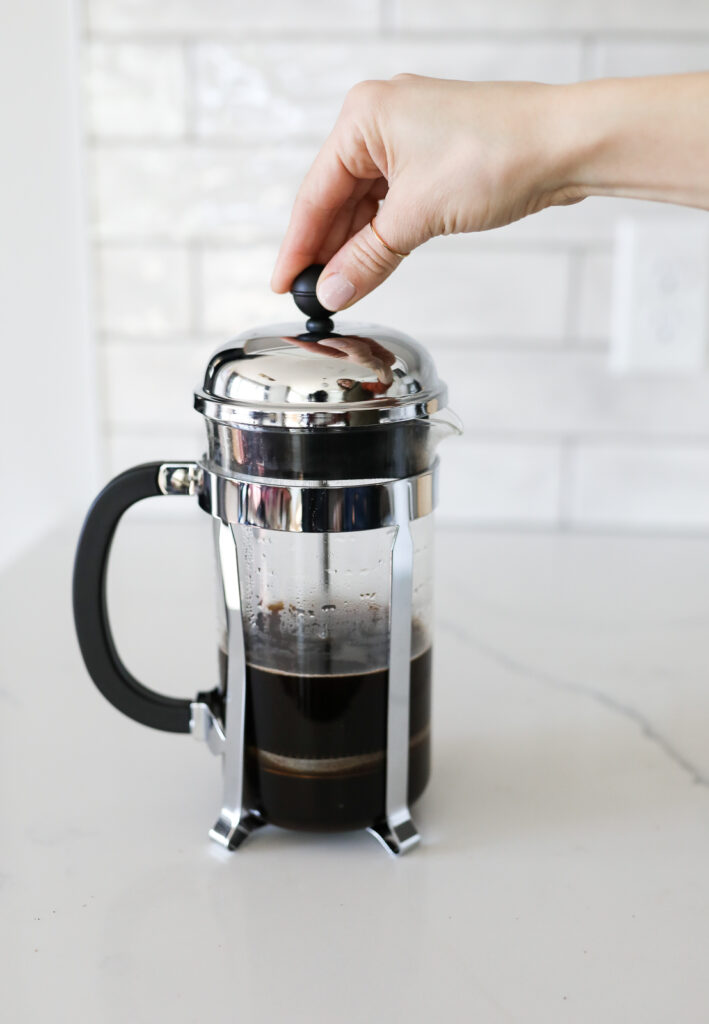
A Classic French Press brand is an excellent place to start. This Bodum is the exact one that I use!
You’ll find these in Starbucks’ and Target but it is just as easy to get online at Amazon. They are the go-to name for French Presses. See for yourself.
2. Stainless Steel French Press
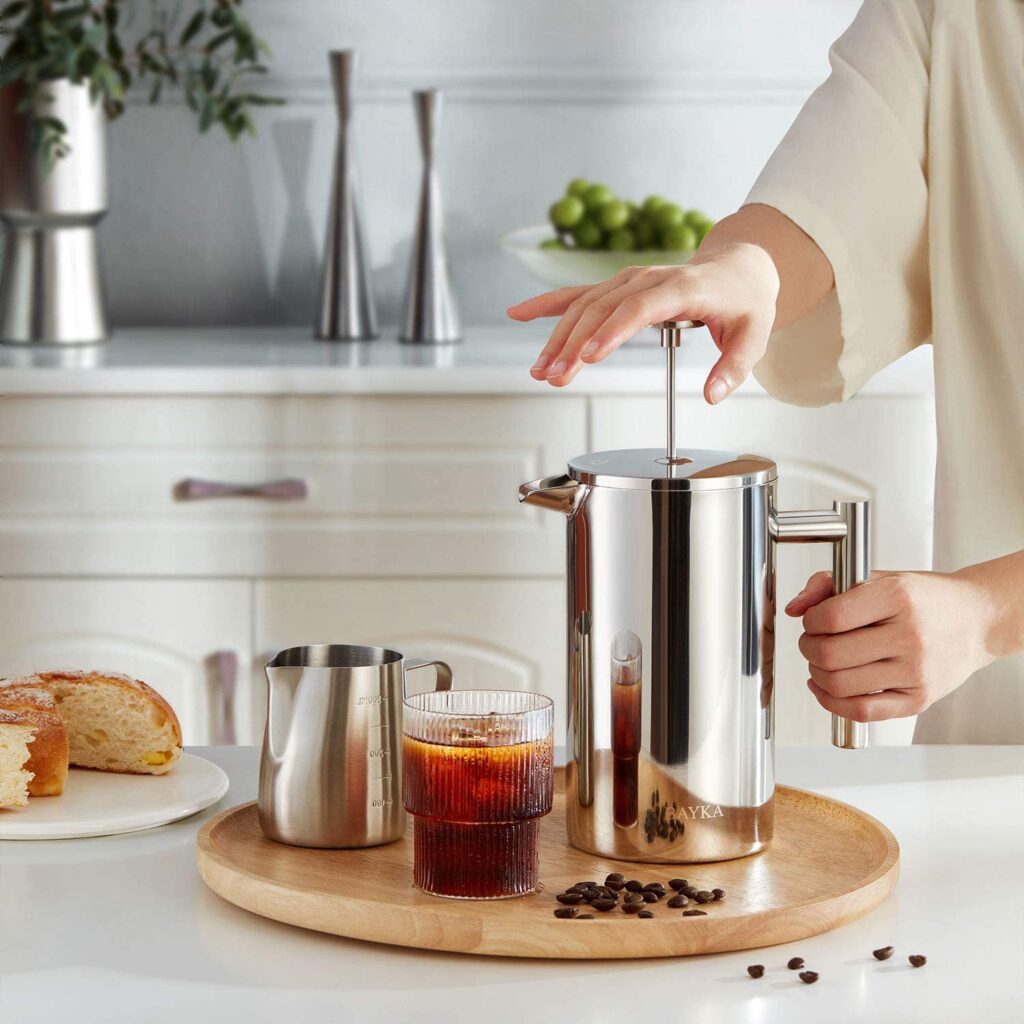
If you have a modern kitchen with stainless appliances, this coffee press might be a perfect match for your aesthetic.
With sizes from 12oz to 50oz, you’ll surely find one that works for you. Just remember to temper it before brewing.
3. Le Creuset Stoneware Press

Stoneware is so interesting that it has to make the cut for French Presses. This durable press is striking in its simplicity. It serves up to 4 and comes with plenty of natural insulation.
So there you have it! Everything you could possibly know about french press vs pour-over coffee. I hope this helps you in having a better idea of the differences and similarities between these two brewing methods.
Let me know what you have found to be the better brewing method!
If you want to learn about one additional brewing method, check out my Aeropress review!
